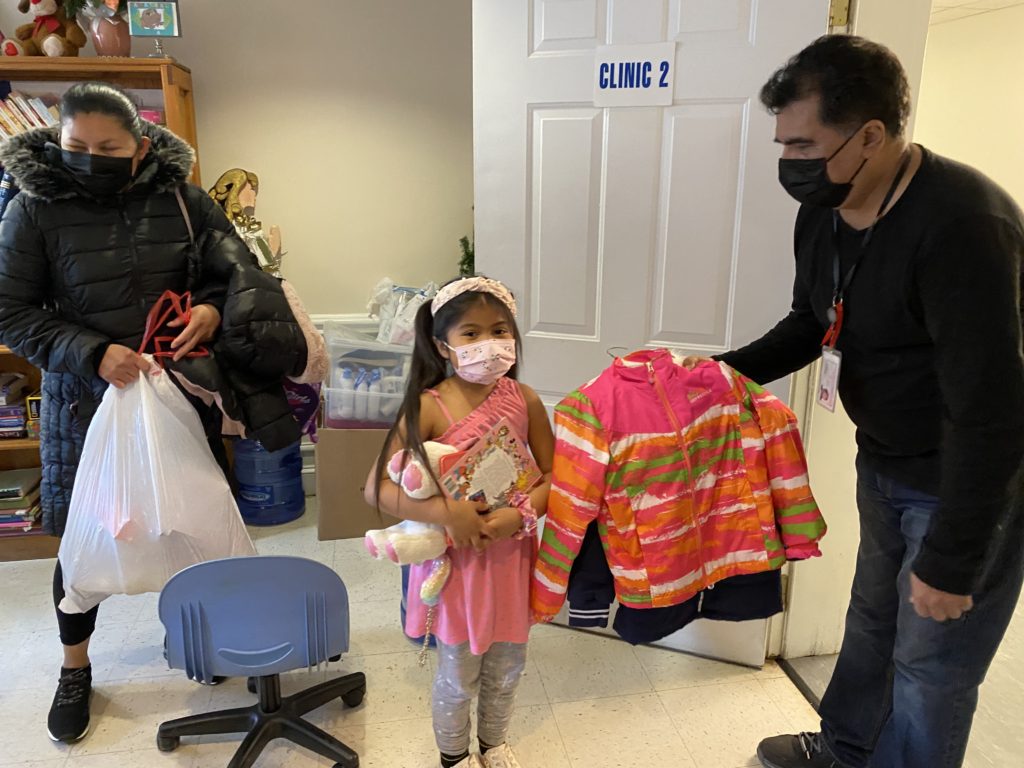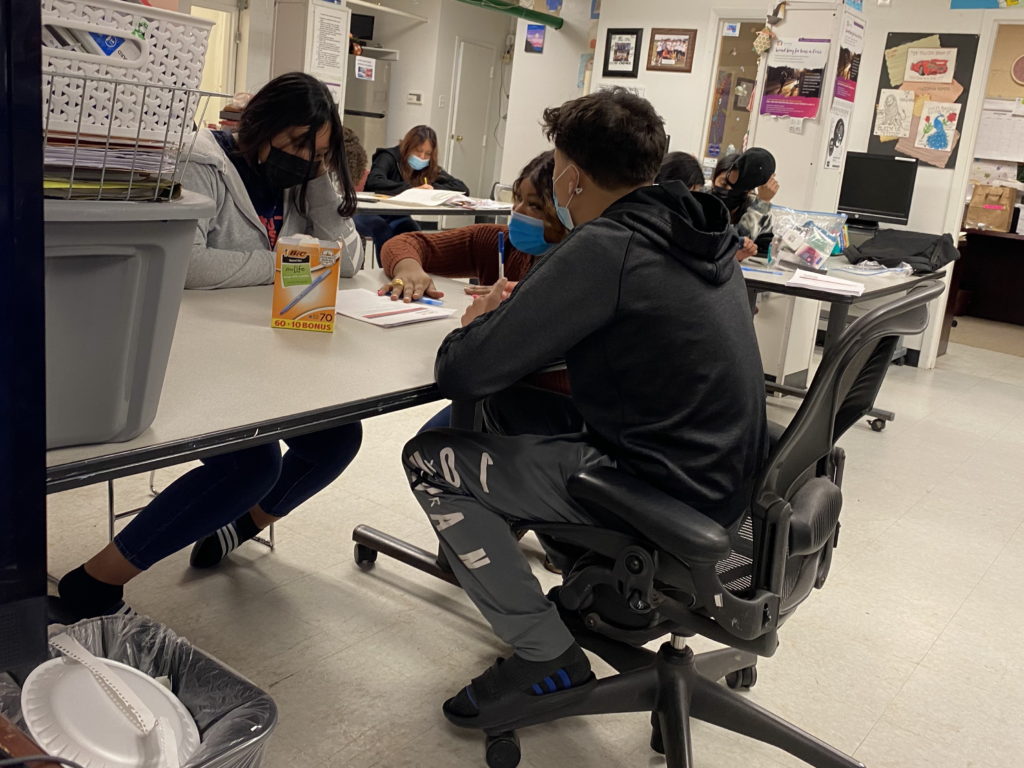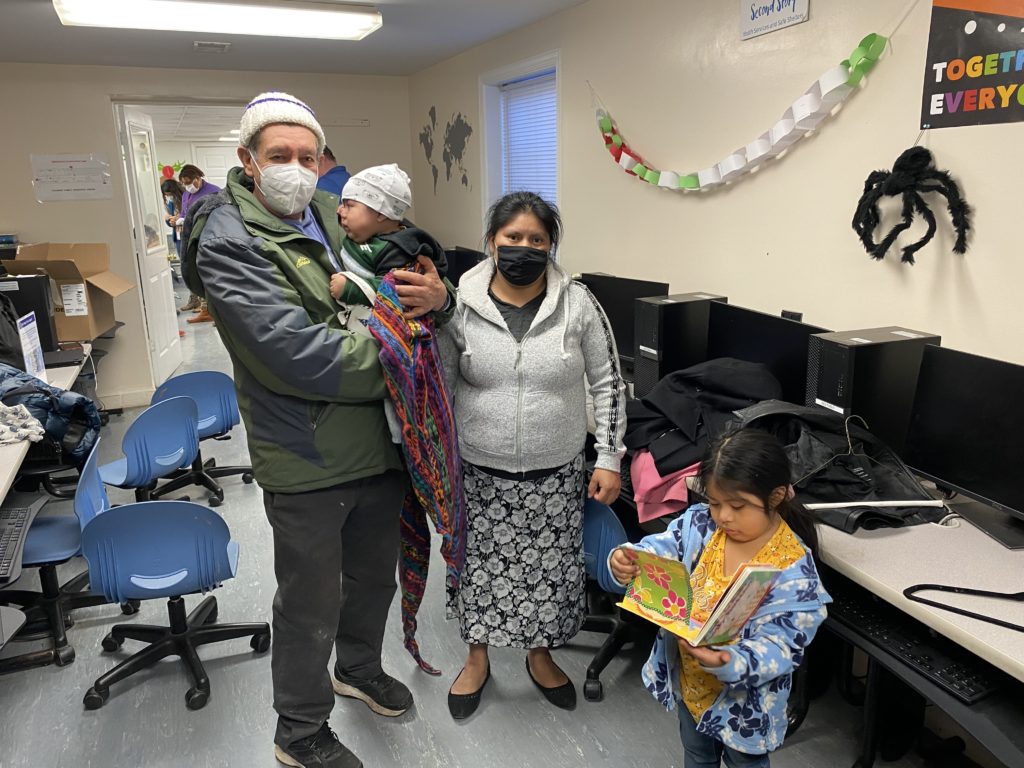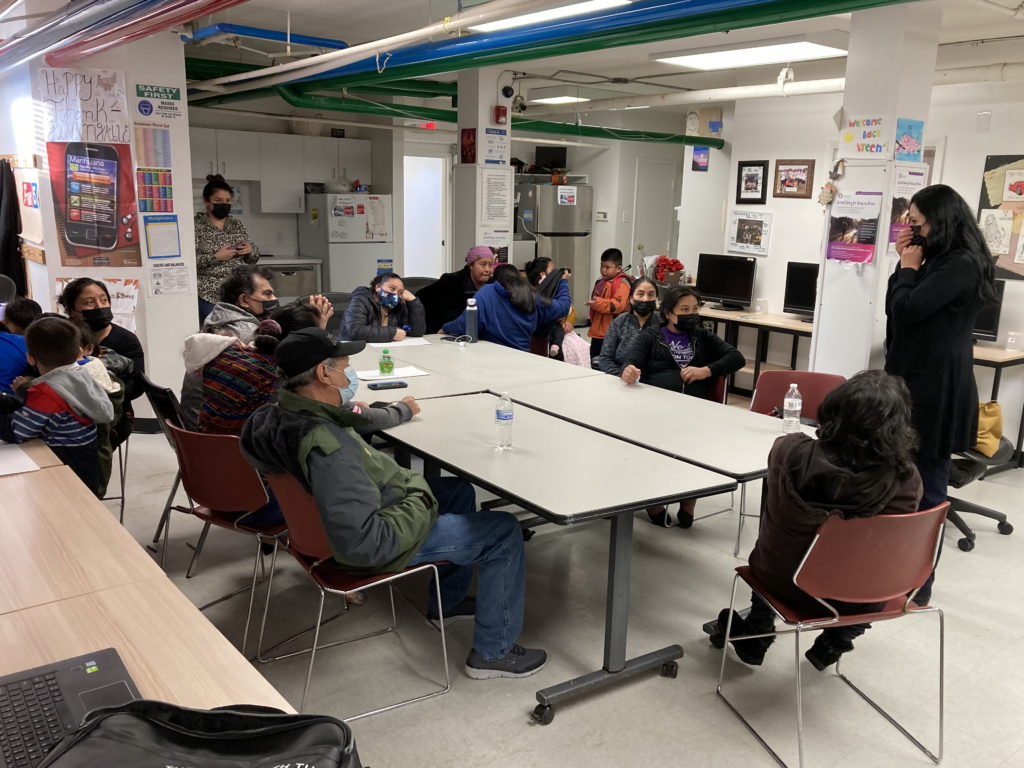ON – Crossroads helps meet the needs of Culmore residents

Thanks to the Opportunities Neighborhood – Crossroads program, residents of Culmore in Bailey’s Crossroads have fewer food insecurities, have gotten a Covid vaccine, and have access to resources for more help.
Opportunity Neighborhoods (ON) is a Fairfax County program that brings together community-based partners and residents to provide resources to vulnerable youths and families. The program serves the most disadvantaged neighborhoods and targets resources based on the needs identified by residents.
Other ON sites are in Annandale, Herndon, Mount Vernon, and Reston.
“The purpose is to bring equity across Fairfax County to all residents,” says Ebony Belt, strategy director for ON at Second Story, the lead organizer for the ON – Crossroads program.

To build trust and encourage community members to participate, Second Story designated 10 resident volunteers as “community ambassadors.”
“It’s better if we actually talk to residents and gauge what they want, not guess what they want,” Belt says.
When Second Story launched a monthly Covid vaccine clinic at the Culmore Family Resource Center, some people were skeptical; they didn’t want the vaccine until they saw the reactions from other people. The community ambassadors calmed their fears and convinced them to get vaccinated and protect their families.
Related story: Residents of Annandale’s ‘opportunity neighborhoods’ work on action plans
The ambassadors serve as “the voice of the community,” says Soraya Borja, vice president of community-based services at Second Story. “They let us know what’s going on in the community – if someone needs a vaccine, or food, or if there’s a need for a stop sign or more security.”
The ambassadors also help out during the food distribution events every Tuesday and Thursday afternoon at the Culmore center.
Second Story also gave out toys during the holidays with support from the Fire Department and gave families a free turkey or chicken for Thanksgiving.
Second Story hosts monthly classes on health literacy, covering first aid, health and safety, vaccines, and related issues. The ambassadors received training so they can help out during the classes and provide translations when needed. Many Culmore residents from Guatemala speak the Mam language and aren’t fluent in Spanish.

The program is focusing on early childhood education and school readiness, Belt says. Second Story hosts a monthly community conversation aimed at educating parents about the importance of prekindergarten and helps them register their children for school.
ON – Crossroads also holds classes on financial literacy. The classes educate residents on how to get a credit card, how to get a credit report, how to apply for a job, and how to file taxes and apply for a tax identification number.
Other areas of focus are family wellness and stability and mental health, Belt notes. “People had to learn how to do things a different way during the pandemic, when food and money are scarce.”
Second Story hosted conversations with community members on mental health services available in the community, while residents had an opportunity to express their feelings and fears, Borja says.
Because people were under economic and emotional stress and stuck inside their apartments for long stretches, there was an uptick in domestic violence.
The program refers youths exposed to domestic violence to county services and will start training people at the Culmore center this month to provide referral services.
One of residents’ biggest concerns is crime and safety, so Second Story convened an emergency safety town hall earlier this month. More than 80 community members participated, while police officers and gang prevention coordinators answered their questions.
“We want to make sure the community is heard,” Belt says. “They really stepped up, advocated for one another, and advocated for the community. If they weren’t comfortable speaking up in the moment, they wrote their questions on a piece of paper and handed it to us. The community truly came together.”

Another component of On – Crossroads is a youth council for students in grades 6-12 who live in the neighborhood around the Bailey’s Community Center and the Oakview Garden Apartments.
Every week, they discuss a different topic, such as dealing with bullying, sex trafficking, and the environment. “We want to hear their voices,” says Edwin Alsaro, a community organizer with Second Story.
Youth council members are asked to pay attention to trends and to what’s going on in the neighborhood, Belt says. They organized a celebration for Black History Month at the Bailey’s Community Center. Activities they’re pursuing include a cleanup day and a monthly read-along with children in grades 1-4 at Woodrow Wilson Library.
The youth council applied for and won a $1,000 mini-grant from Fairfax County to establish an anti-vaping campaign. They designed a T-shirt, and they’re developing an Instagram page to educate their peers on the dangers of vaping.
ON – Crossroads was awarded a $10,000 gang prevention grant from Fairfax County, which is being used to bring teens to classes at the MiKiDo martial arts studio on Carlin Springs Road.
Related story: Hundreds of children make holiday crafts at Opportunity Neighborhoods-Annandale event
They are learning discipline and anger management, as well as how to defend themselves against bullies. The idea is to learn how to think first, before fighting. “We can see a difference. This is making a change in their lives,” Borja says.
At the teen center in Culmore, two interns with the program have weekly mental health sessions where teens can talk about their feelings and challenges.
Many live in crowded apartments. They’re worried about family members dying from Covid. And when schooling was done virtually, they had a hard time accessing their classes and studying online.
“The pandemic has been especially difficult for kids,” Borja says.
